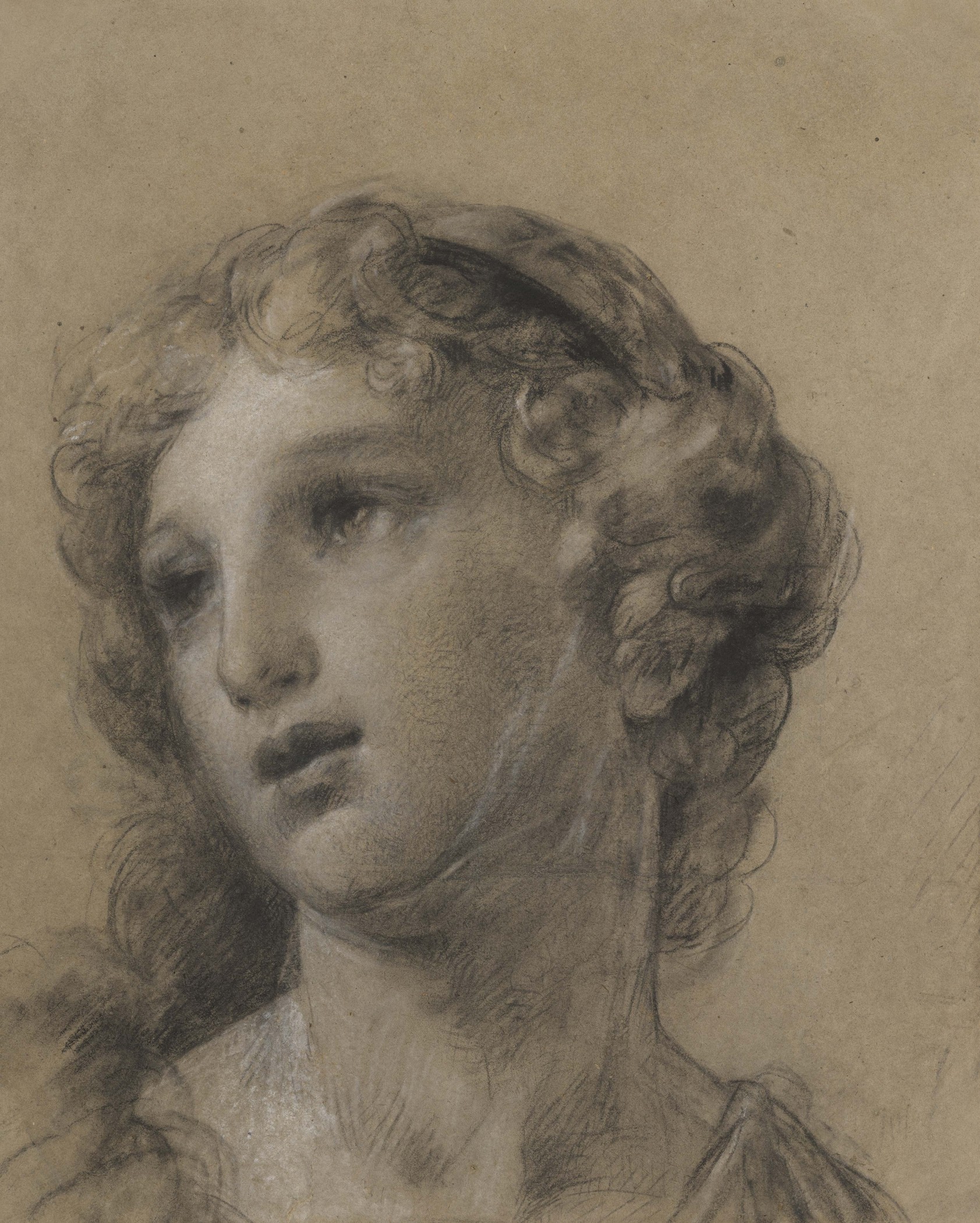Andrea Appiani
(Milano, 1754 - Milano, 1817)
Portrait of a Young Lady,
black and white chalk, pastel on paper
342 x 270 mm (13.46 x 10.63 inches)
Andrea Appiani
(Milano, 1754 - Milano, 1817)
Portrait of a Young Lady,
black and white chalk, pastel on paper
342 x 270 mm (13.46 x 10.63 inches)
Re: 0267
Description:This splendid drawing, as sophisticated in its technique as it is incisive in its handling of the psychological introspection with which the figure is portrayed, marks a significant contribution to our understanding of the already considerable – yet hitherto insufficiently studied – drawings of Andrea Appiani, one of Neoclassicism’s leading lights who proved capable in his graphic work of achieving such dazzling heights that he considered it, in public and private collections alike, to be on a par withs his frescoes and paintings – a fact that did not escape the notice of his “official” biographer Giuseppe Beretta, who frequently mentions and praises the artist’s drawings in his crucial biography of 1848, assigning them their proper place in his overall output.
In this particular instance the work is so meticulously finished, the artist having had recourse to different kinds of pencil, to delicate lead white highlighting and to light pastel colouring, that its like is found in very few of his other drawings. We can see it, for example, in his portraits of Giuseppe Vallardi in the Gallerie dell’Accademia in Venice, of Napoleon in the Accademia di Brera, of the publisher Nicolò Bettoni in the Civici Musei d’Arte e Storia in Brescia and of Eugène de Beauharnais in the “Album Cicognara” in the Museo Correr in Venice (Disegni, acquarelli, tempere di artisti italiani dal 1770 ca. al 1830 ca., ed. A. Cera, Bologna, Edizioni Tipoarte, 2002, nos. 31,32,39,50).
But the true charm of his work lies in the way Appiani typically captures his female sitters’ psyche. As Beretta points out, their features are characterised by “a singular specialness” inasmuch as “in looking at them we feel that mysterious, flattering empathy which, in conveying to us their own smiling wishes, persuades us that we are capable of awakening it ourselves” (G. Beretta, Le opere di Andrea Appiani. Primo pittore in Italia di S.M. Napoleone…Commentario per la prima volta raccolto dall’incisore Giuseppe Beretta, Milan, Tipografia Silvestri, 1848, anastatic edition edited by R. Cassanelli, Cinisello Balsamo, Silvana Editoriale, 1999, pp. 29-30). This empathy permeates the drawing under discussion here, where the sitter observes us with such intensity that it truly feels as though she is bent on communicating her feelings and her mood to us. The figure garners strength also from the effective dynamic of the overall composition, with her bust, silhouette and face in a frontal position while her fine hand emerges on the right to hold her gown.
In the intense, billowing and absolutely informal hairstyle favoured by ladies in the years following the French Revolution – a reaction to the wigs of the 18th century – we can see one of the painter’s most characteristic features. According to Beretta, Appiani “also paid great attention to the quantity and quality of hairstyles, and this attention bore the most excellent fruit: others may consider such things to be of little import. He realised that a face can convey a friendly demeanour or the contrary in proportion to the appropriate arrangement of the locks around it, which can cause it to be more amenable, more expressive and grander” (G. Beretta, op.cit., p. 33).
These perceptive remarks perfectly describe the portrait under discussion, as indeed they do other known portraits by Appiani in a similar vein, for example his portrait of the singer Carolina Pitrot Angiolini in the Pinacoteca Ambrosiana in Milan (Pinacoteca Ambrosiana. Tomo quarto – Dipinti dell’Ottocento e del Novecento – Le miniature, ed. M. Rossi and A. Rovetta, Milan, Electa, 2008, pp. 48-50) or a portrait thought, albeit erroneously, to depict Joséphine Bonaparte auctioned by Christie’s in Paris in 2008 (Tableaux Anciens et du 19ème siècle, 26/6/2008, no. 62). These two paintings and the drawing under discussion here share the same magnetic atmosphere, thanks also to the fact that the women portrayed share similar features, hairstyles and apparel.

